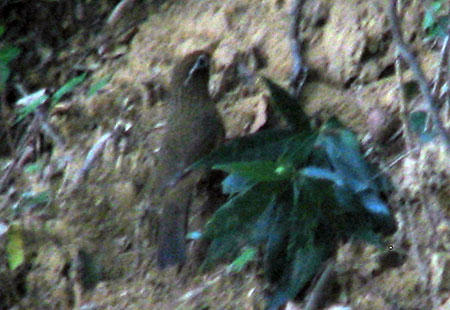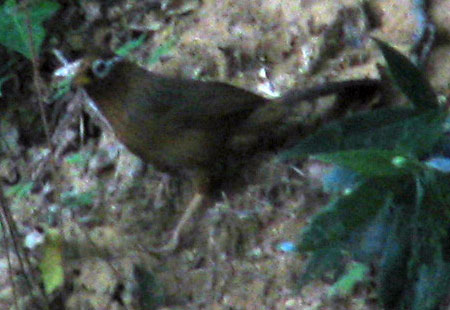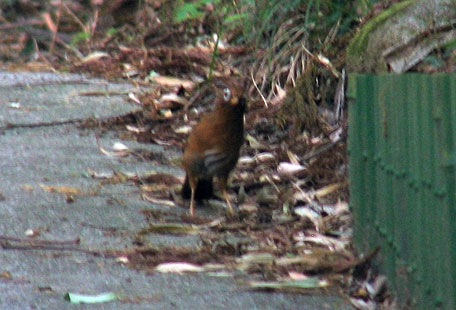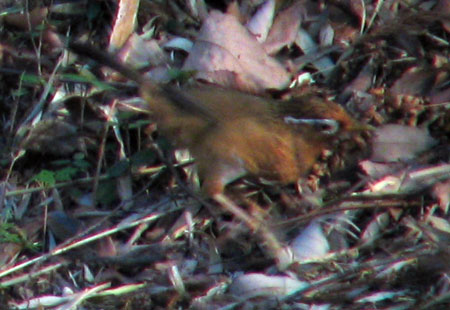Melodious Laughing Thrush
I have to admit, this one had me stumped. It’s the first time I have spotted a bird in Japan which is not in any of the Japanese bird guides I have. Actually, Sachi spotted it–we were taking a walk in the hills near my home station, via a local shrine. We heard a lot of Japanese Bush Warblers (aka Japanese Nightingales), Long-tailed Tits, and Meadow Buntings (but did not see any), and even did manage to spot a pair of Chinese Bamboo Partridges. But on the way down the many stairs leading to the shrine, Sachi saw a bird in the brush which then hopped along the stairs. I was able to follow it up the stairs and get a lot of photos–but because of the very low light, I was limited to mostly-blurry 1/15th-second exposures, and even then the exposures were dark. But even then, even with the tiny thumbnails on the camera’s display, I could see the markings around its eyes, and knew I had something unusual.
About two years ago, I was exploring a hilly path not too far from where we were today, and came across a birder who was excited about seeing some species that I had never heard about. Neither of us spotted the bird, but when I got back home, I looked it up, and noted the facial markings. That’s what I recognized today.
When I got home and got a better look at the photos, I looked through my field guides, and it wasn’t there. Not remembering the name I had been told a few years back, I did searches on the Internet for “bird white ring line eye China” (I recalled that it was a Chinese bird). Nothing came up. So I went to the Bird Forum, where there is a bird ID area; you don’t know about a bird you spotted, they’ll help you out. And in an hour or less, I had my answer.
The bird, as it turns out, is the Melodious Laughing Thrush, or “Gabi-chou” in Japanese. It’s a Chinese bird (Chinese name: Hwamei) which has been accidentally introduced into Japan and Hawaii, and is considered an invasive species which threatens other thrushes and even perhaps the Bush Warblers. Apparently, it is prized for its song (which it did not display for us today), and is one of many species banned for import by the Japanese government. There is a 2004 study of it here, with maps of its ranges and expansion.
As I mentioned, I did not get very good shots, but this is what I have. You can see what I mean by the facial markings. For clearer shots, look here.



Note the white swirl markings on its belly; I haven’t seen that elsewhere.

These last two images show the color better; it was definitely more reddish-brown than appears in the first two images. Better lighting brought that out.
